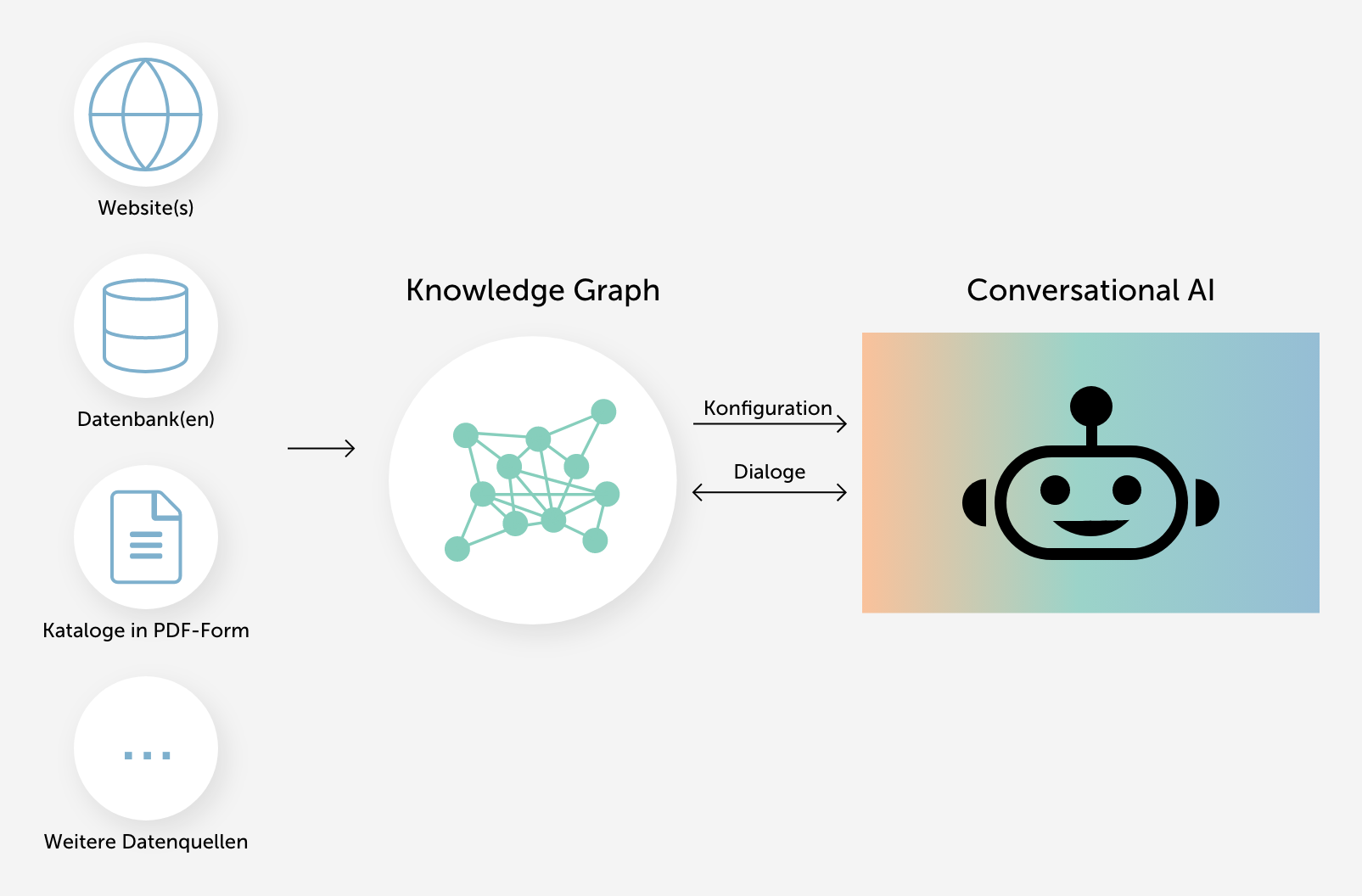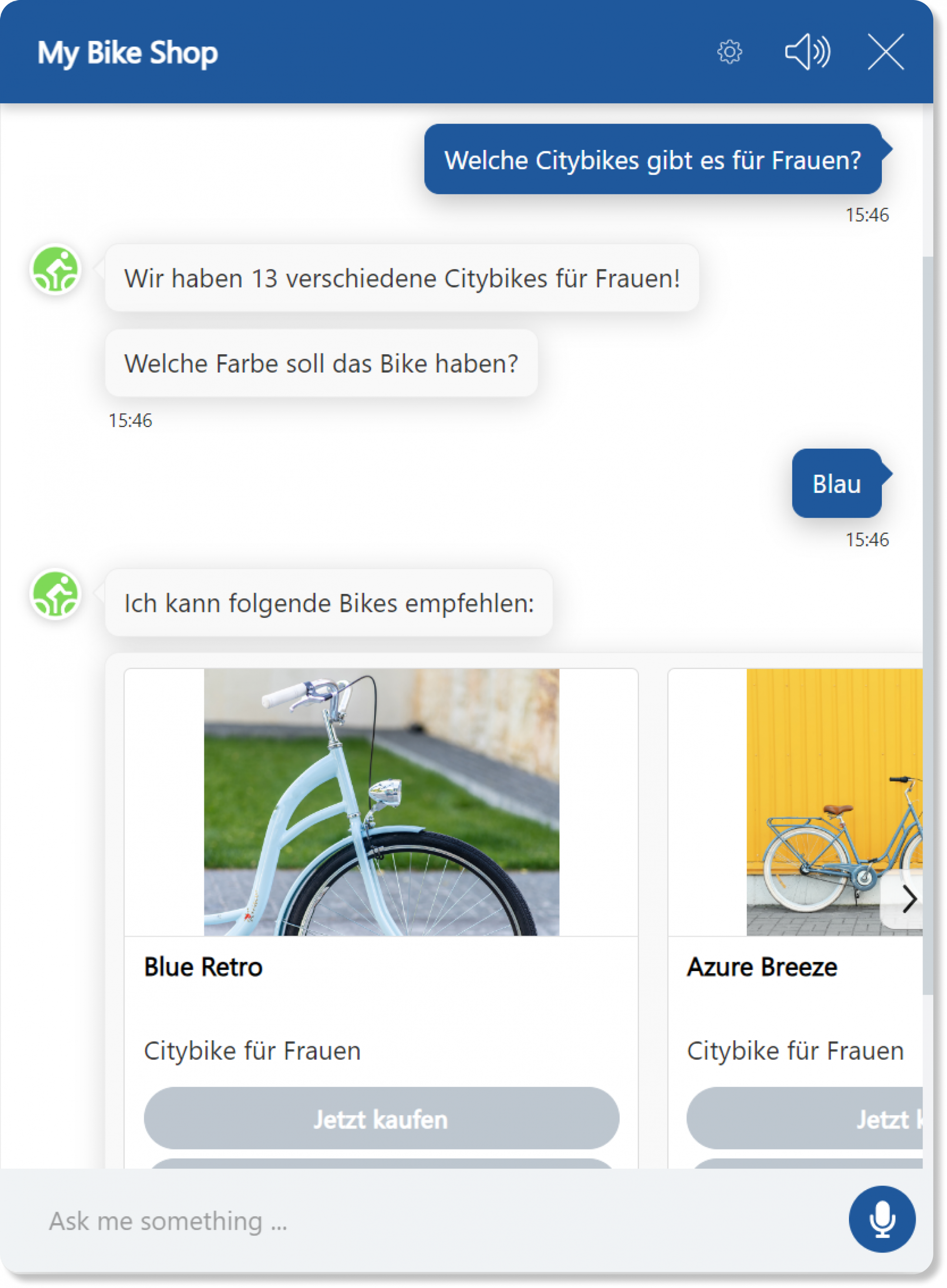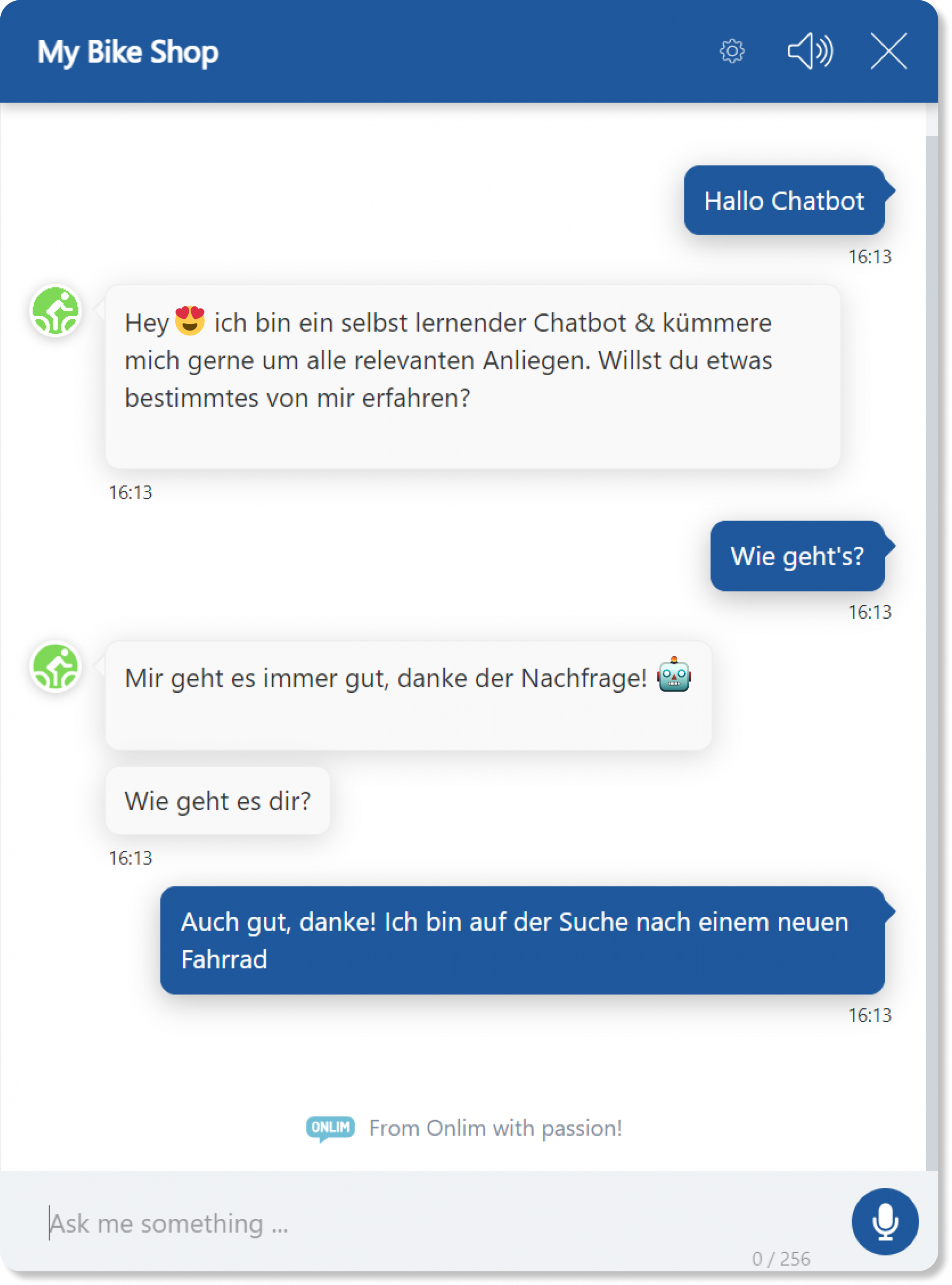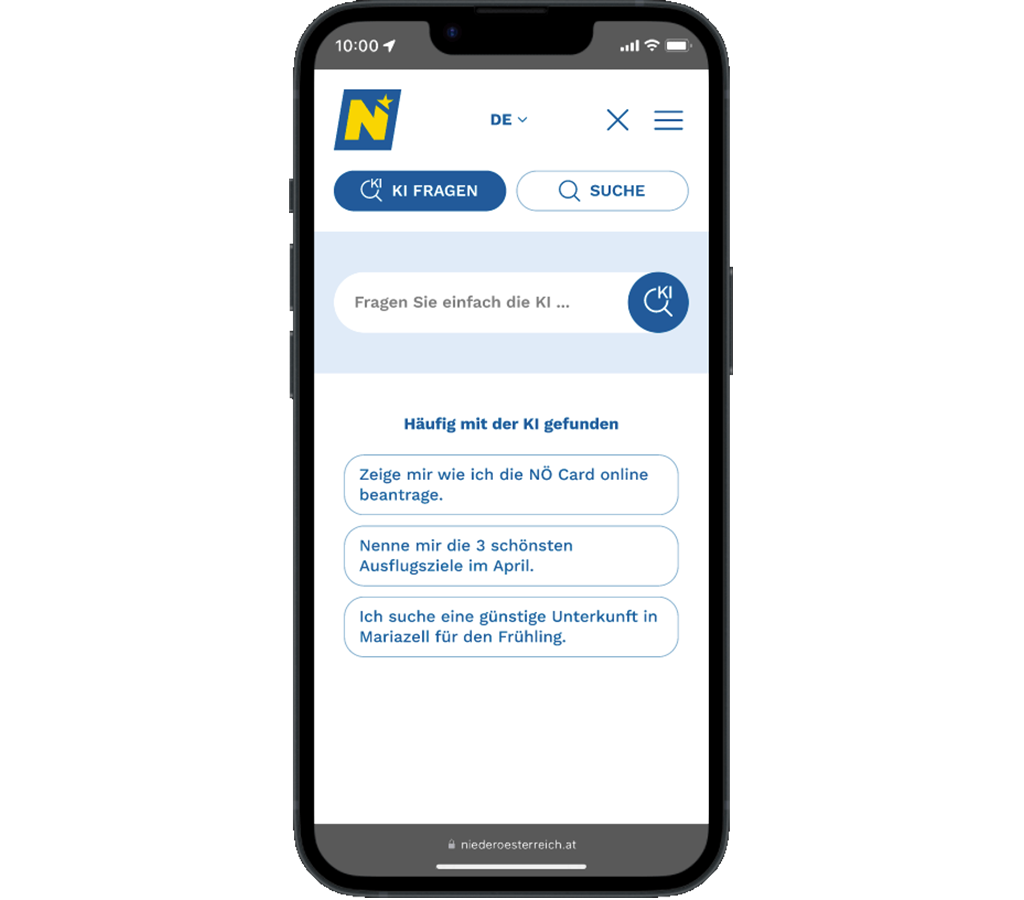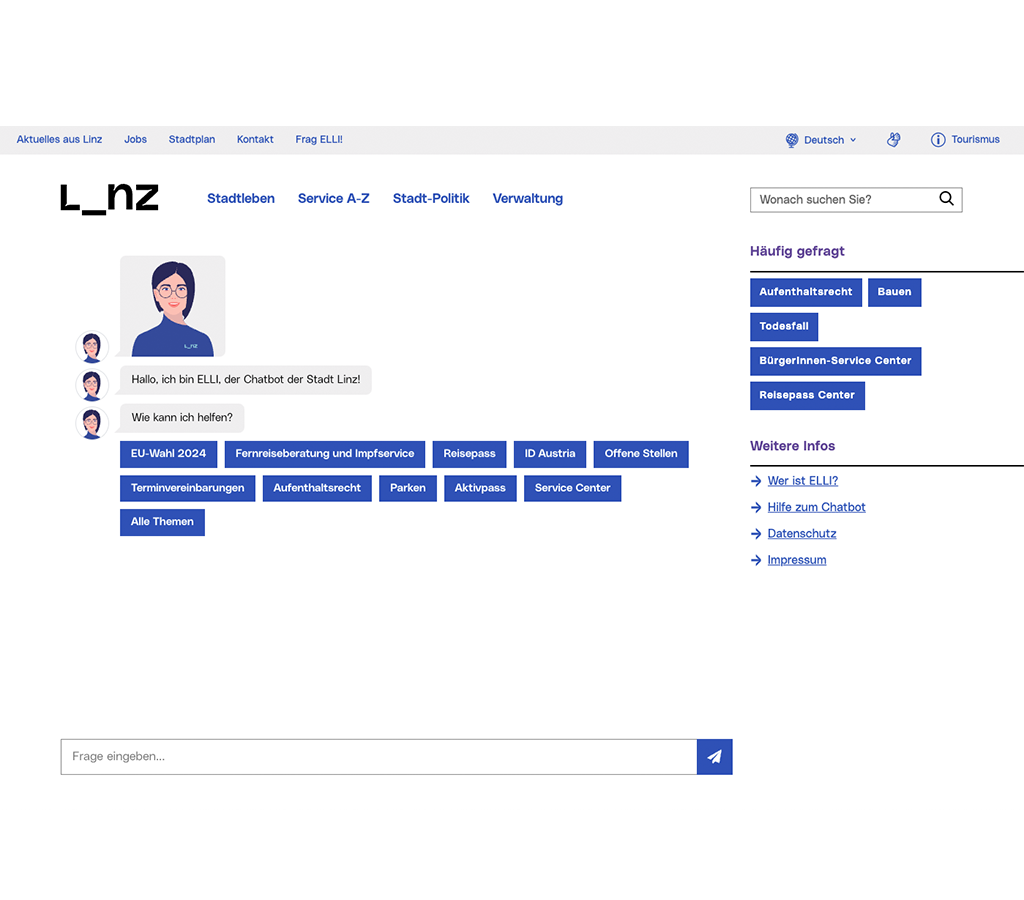Standard chatbots give predefined answers to predefined questions and are therefore far inferior to chatbots that use artificial intelligence.
AI Assistants & Chatbots Your agency for conversational AI solutions
AI assistants & chatbots bring positive effects such as increases in sales and recruiting as well as cost reductions. But who is actually in control of the artificial intelligence? With our AI bots, it's you. All data and settings are under your own control.
No comparison to a chatbot without AI
Who hasn’t experienced this? You ask the chatbot a question and it answers whatever. In that case you came across a chatbot that doesn’t understand you and your request, but only a fixed set of questions and terms to which it spits out predefined answers.
With Conversational AI, simply known as an AI assistant or chatbot, you can provide your customers with a dialogue partner that actually responds to their needs. The chatbot we use utilises artificial intelligence – specifically a “large language model” – and therefore effortlessly recognises synonyms and different formulations. The bot formulates the answers comprehensibly and correctly – simply intelligent. You decide exactly what the chatbot should answer by specifying which data it should access: only the content of your website(s) or also other databases, wikis, PDFs, etc.
What are the benefits of an AI assistant?
Conversational AI, an AI chatbot or an AI chatbot: no matter what we call it, the areas of application are just as diverse as the positive effects: better sales results through more conversions, more satisfied customers through better service, significant cost savings, for example in call centres, more qualified applications and much more.
Low-threshold communication channel for customers
For many users, clicking through a navigation and searching for the right information on a website is not their thing. They simply want to ask a question quickly and get a helpful answer.
A chatbot with AI increases the likelihood of prospects becoming qualified leads on the one hand and increases customer satisfaction through better service on the other.
Just like in real life: You can talk about anything with an AI chatbot
Just like in real life, users’ questions can concern anything. They can range from detailed product specifications, available properties that fulfil certain criteria, responsibilities and opening hours to detailed questions about processes or deadlines, just to name a few examples. There are virtually no limits to the imagination here.
A well-trained and professionally implemented AI chatbot not only provides correct answers, but also prepares them in a suitable manner, such as a clear list of products that fulfil the specifications mentioned.
Of course, an AI-based chatbot can also deliver the appropriate call-to-action after it has answered the user’s questions. This makes it easier for users to take the next step and thus increases the likelihood of conversion.
Less effort in customer service and call centres
Who still picks up the phone and calls customer service when it is so much more convenient to chat with a well-designed and carefully implemented AI chatbot that answers all questions correctly and comprehensibly? Many people today prefer written communication and avoid phone calls if there is an alternative. This saves your company a lot of money and frees up your employees’ resources to focus on other tasks.
Recruiting: Uncomplicated processes for applicants
Many companies are realising that they are experiencing increasing difficulties in finding the right personnel using conventional recruiting methods. Young talents in particular have different communication habits today and often see conventional processes as a hurdle. A modern way of communicating opens up a number of ways for applicants to get in touch and is an important part of employer branding, right from the first touchpoint.
With a pre-trained AI assistant, (potential) applicants can freely ask their questions and receive correct, convincing answers, formulated in the appropriate tone and – if desired – with a call to action, ideally to start the application process right away.
AI chatbot for the intranet saves working time
It’s hard to believe, but an AI bot can behave like the most helpful colleague: In masses of guidelines, templates, contact lists, responsibilities, know-how wikis, process descriptions, etc., the artificially intelligent dialogue partner can find what you are looking for in no time at all.
Very often, even the best traditional search and the best navigation model cannot achieve this. Employees lose a lot of time with conventional search methods, whereas an AI chatbot delivers what they are looking for very quickly. This increases productivity and employee satisfaction
Incidentally, security concerns are not necessary: as a specialised chatbot agency, we guarantee an intranet-appropriate level of security with the right type of AI assistant & chatbot implementation.
What you need to bear in mind when training the AI chatbot
Only correct answers are good answers
Anyone who has ever used ChatGPT or Gemini by Google (formerly Bard) will know that the AI sometimes “hallucinates”, i.e. gives incorrect and sometimes abstruse answers. Even more common are inaccurate, unsatisfactory answers.
To avoid this, we train your AI chatbot thoroughly. To put it simply, the most important use cases and questions are defined for each target group, and the answers generated by the AI assistant are checked and, if necessary, adapted using knowledge graph technology. Once the chatbot has been launched, its use is permanently tracked and the chatbot is continuously optimised based on the tracking results. This gives you control over the information that your chatbot outputs.
Clear information for clear answers from the AI bot
One reason for incorrect information and a lack of precision from ChatGPT & Co. is the amount of sometimes contradictory data that is accessed. With your own AI chatbot, things are different. As part of the setup, you determine the data source(s) that the chatbot should and should not access.
Examples of this are
- Website(s): all pages or only certain ones (in large organisations such as universities with thousands of webpages, a lot of information is no longer up to date, or information is redundant, so it makes sense to exclude certain website areas as a data source)
- (Product) databases, PIM
- CRM
- Catalogues in PDF form
- wikis
- Email conversations (e.g. from customer service)
- Social media platforms
- etc.
The costs depend on the requirements
The cost of implementing an AI chatbot ranges from a few hours to tens of man-days – and this does not even depend primarily on the scope of the data that the chatbot is to access.
The key factors are:
- Demand for correctness and precision in answering questions
- Quality of the data sources
- Extent of the required "training" of the AI chatbot: Is it enough to correct a few answers or do many answers have to be rewritten? This in turn depends on the quality of the data sources.
- Number of target groups and use cases and the associated number of questions and answers that need to be checked and, if necessary, corrected
- Number of data sources and type of interfaces to the data sources
- Type of integration into the website, online shop or app: as a simple chat window or fully integrated on the UX and UI side
- Number of individual chatbots: one superordinate chatbot or one chatbot per target group or area (e.g. career chatbot, customer service chatbot, prospective customer chatbot, etc.)
Standalone or fully integrated into the website or app?
Currently, chatbot solutions are usually integrated as simple chat windows at the bottom right of a website or app. This is sometimes useful, but sometimes not because the chatbot appears as sort of a foreign body on the website or app.
In most cases, seamless integration – e.g. together with the website search or as an input field on the product overview or career webpage – is the better option from a user experience perspective in order to seamlessly integrate the AI chatbot into the website or app and into the user flow instead of offering completely separate access to information.
GDPR compliance
The way in which the AI chatbot is implemented determines its GDPR compliance. Together with our AI technology partner ONLIM, we ensure 100% GDPR-compliant AI chatbot solutions
Technology and features
An AI chatbot consists of a combination of several technologies that can be used flexibly depending on requirements:
-
Conversational AI platform
With the Conversational AI platform, data sources such as website content, CRM or PIM are connected via standardised interfaces and conversations, multilingual content and conversation modules are managed.
-
Natural Language Understanding (NLU), Large Language Model (LLM)
Depending on requirements, the most suitable "Natural Language Understanding" component is connected, e.g. the large language model from OpenAI (ChatGPT language model).
-
Knowledge Graph
With the "Knowledge Graph" technology, we network your entire company knowledge and prepare it for dialogue management in natural language.
-
Analytics
Extensive analysis options make it possible to track the satisfaction of chatbot users and their content needs as well as traffic, among other things.
-
Multi-channel connectors
They enable automated 24/7 communication via all relevant channels such as websites, email, messenger services, Alexa & Co, telephone, own apps in text and voice
-
Software as a Service (SaaS)
No local installation is required. The platform is simply put into action via your web browser.
-
Content management and self-maintenance
After training, the AI chatbot can be "filled" and operated editorially by users without programming knowledge in departments such as customer service, sales, marketing, human resources or IT.
We are working with ONLIM, one of the leading providers of conversational AI platforms in the DACH region, to implement the AI chatbots.
How we proceed.

